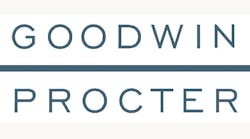In lean economic times, like the present, competition may make a merger or acquisition an attractive strategy. But with these transactions comes potential exposure to the seller’s debts and liabilities.
For products manufacturers, the scope of this exposure may be difficult to assess, as products liability claims may arise years after a product is initially manufactured and sold. In light of this uncertainty, such transactions should involve careful consideration of the successor liability issue.
Whether to Accept Liability
The first important question, frequently given short shrift, is whether a buyer should assume the debts and/or liabilities of the seller or attempt to avoid them. Although most may prefer to avoid a seller’s liabilities, in some circumstances assuming liabilities may make business sense.
Assuming liabilities should reduce the price. If the buyer has a means of mitigating the liabilities that is not available to the seller, including the liabilities in the acquisition could actually increase the value of the deal. The buyer may also benefit from the tax consequences of absorbing a seller’s liabilities.
In analyzing a seller’s potential liabilities, a buyer should also investigate the status of the seller’s insurance. If the seller’s liabilities are covered by insurance that will continue to provide coverage to the buyer after the transaction, assuming those liabilities may be more economical.
Evolution of the Law Regarding Successor Liability
Historically, the law recognized two types of acquisition transactions, which had different sets of risks and rewards. Importantly, one type exposed a buyer to the seller’s debts and liabilities, and the other did not.
Buying a whole company means taking the bitter with the sweet — while a buyer may benefit from the company’s brand and reputation, it must also shoulder the company’s debts and liabilities. This type of acquisition is typically accomplished through a merger or stock purchase.
Buying a company’s assets — such as raw materials, equipment, real estate, or unsold merchandise — did not, historically, entail taking on the seller’s debts or liabilities.
However, over time savvy buyers devised more sophisticated asset-purchase arrangements that provided nearly all of the benefits of acquiring a whole company, but that, under the historical rule, avoided assuming any of the selling company’s debts or liabilities.
Courts reacted against this attempted end-run around the selling company’s debts, and imposed new tests on asset acquisitions to protect the rights of the seller’s potential creditors.
A few of these tests have gained widespread acceptance, although their details vary by jurisdiction. Collectively they are known as the doctrine of “successor liability.”
With the widespread acceptance of the successor liability doctrine, there is no longer a straightforward, fool-proof way to buy a substantial portion of another company’s assets while avoiding any exposure to its debts and liabilities.
Current Successor Liability Doctrine
Although the successor liability doctrine continues to evolve and its details vary from state to state, it generally imposes liability on a buyer in three circumstances: The transaction is a de facto merger; the resulting entity is a “mere continuation” of the seller; the transaction is fraudulent.
These theories of liability also hinge on the extent of the acquisition. Liability is more likely if all or nearly all of the seller’s assets are acquired.
Product manufacturers should also note the “product line” doctrine, adopted in some states. Broader than the traditional doctrines, it looks only to whether the buyer continues the seller’s manufacturing operation and sells products under the seller’s brand.
When buying a products manufacturer’s assets, buyers should investigate whether this doctrine applies in the area where the products are sold.
Despite all of these variations, the successor liability doctrine is, at core, an attempt to protect the seller’s potential creditors.
As a practical matter, a buyer can assess the risk of a proposed acquisition using a simple rule of thumb: Are the seller’s creditors worse off after the transaction than they were before? If yes, the transaction exposes the buyer to risk. The worse off things look for the creditor, the bigger the risk.
Practical Steps for Avoiding Successor Liability
Buyers have two key lines of defense against sellers’ liabilities. The first line of defense is stronger, and should be pursued if at all possible.
1. Make sure the seller is available to respond to creditors. This assurance could take one of several forms: the seller remains in business and has sufficient assets to cover potential claims; the seller remains in business and has sufficient insurance to cover potential claims.
The seller or its principals agree to indemnify the buyer for successor liability claims and have the wherewithal to do so.
2. Make a clean break. If the seller is not available to respond to creditors, the buyer may still avoid the seller’s liabilities if there is a clean break between the seller and the buyer.
Facts that may demonstrate this clean break include: Buyer has a different company name and brand from seller; buyer makes a different or distinguishable product from seller; buyer has a different location from seller; buyer has different officers and directors from seller.



